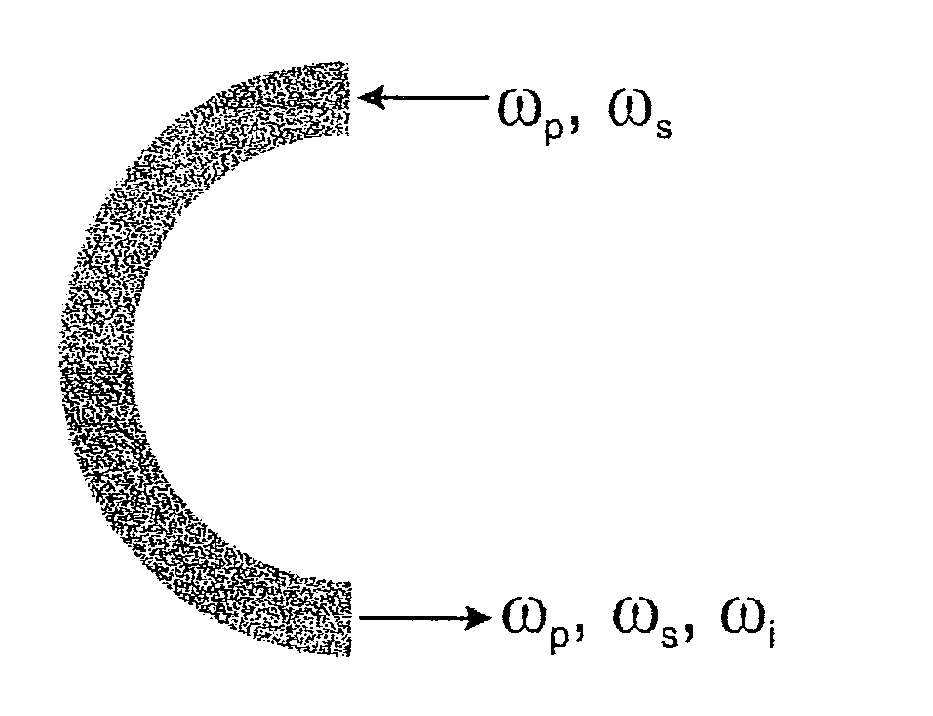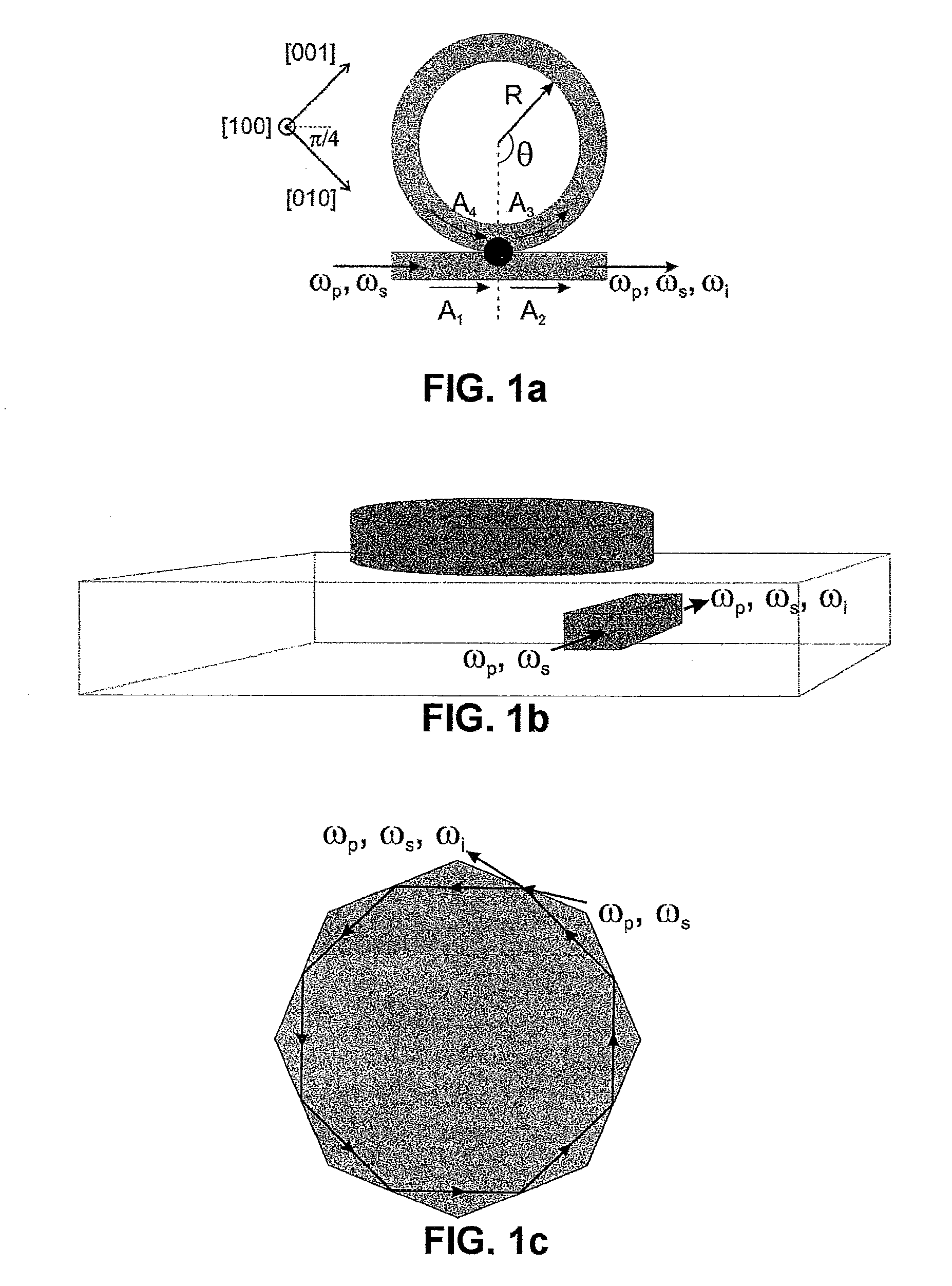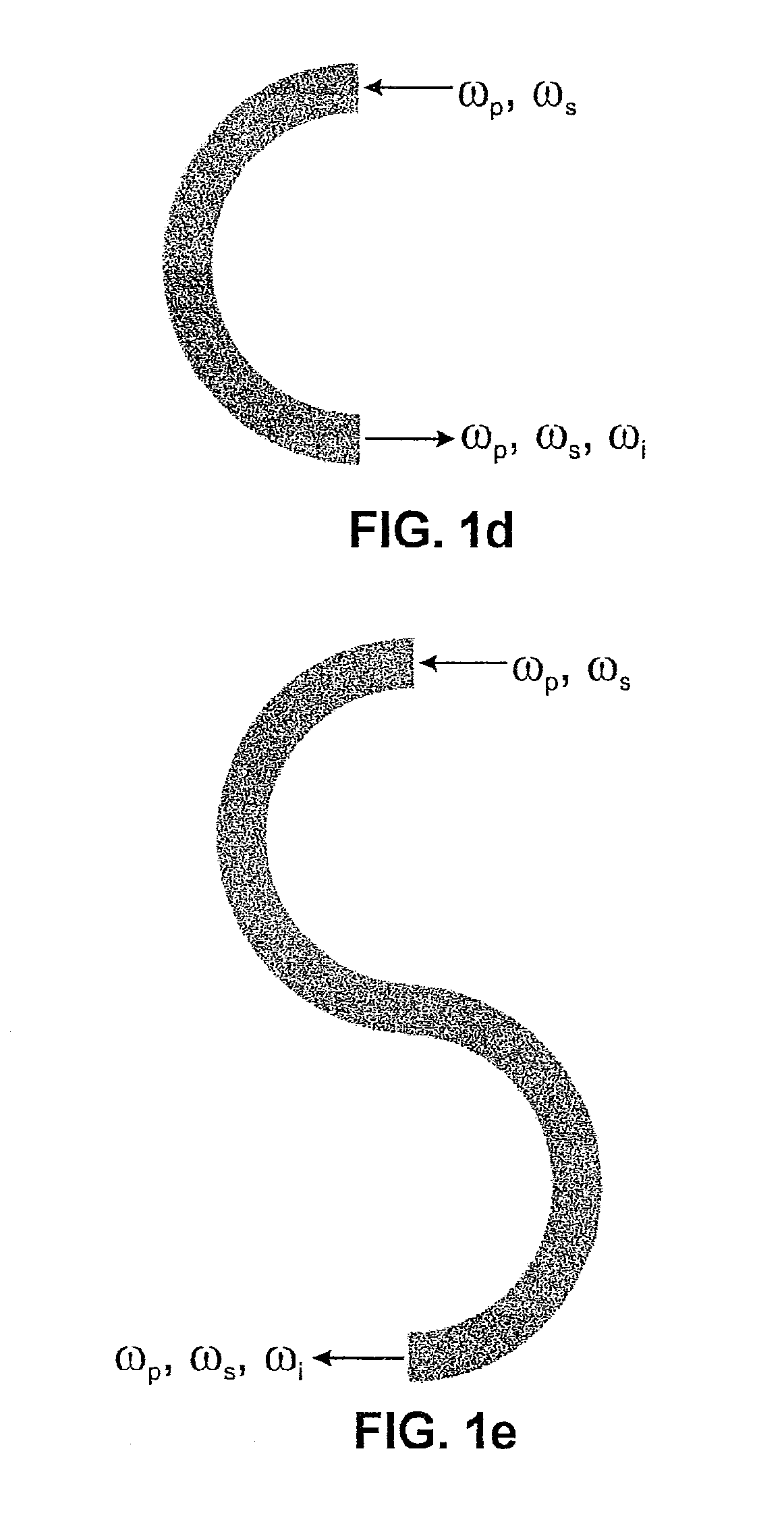Bent structures and resonators with quasi-phase-matched four-wave-mixing and methods for converting or amplifying light
a phase-matched four-wave-mixing and resonator technology, applied in the field of optics, can solve the problems of reducing wavelength conversion efficiency, substantial free carrier absorption (fca) loss, and not all materials can benefit from the waveguide-based phase-matching technique outlined abov
- Summary
- Abstract
- Description
- Claims
- Application Information
AI Technical Summary
Benefits of technology
Problems solved by technology
Method used
Image
Examples
first embodiment
[0103]For the first exemplary comparison in the first embodiment, one considers for the QPM Raman ring converter configuration a TE-polarized pump input and a TE-polarized Stokes-shifted signal input with a frequency difference corresponding to the exact Raman resonance: ωp=1.22×1015 rad / s (λp=1.55 μm), ωs=1.12×1015 rad / s (λs=1.686 μm). This leads to a generated idler wave with angular frequency ωi=1.32×1015 rad / s (λi=1.434 μm). The system may have a structure as illustrated in FIG. 1. At these near-infrared operation wavelengths, the Raman gain coefficient gR of silicon equals 20×10−9 cm / W. As there are no dispersion engineering constraints for the QPM converter, one is free to choose the waveguide geometry for both the ring and the channel. When taking a nanowire of 300-nm height and 500-nm width, the free carrier lifetime τeff will be as short as 500 ps. Because of the oblong core of the nanowire, TM fields generated through spontaneous Raman scattering in the ring are for the la...
second embodiment
[0106]It is pointed out that for the QPM device the TPA losses will also undergo a periodic variation proportional to (0.88+0.12 cos2(2θ)) in the ring, but as the varying part of the TPA losses is small compared to the constant part, this variation only has a small influence, as simulations that are not presented here in detail confirm. In the second embodiment it will be shown, however, that an equally small variation of the effective Kerr nonlinearity γ does suffice to effectively establish quasi-phase-matching in a parametric converter, since this variation establishes a phase effect rather than an intensity loss effect.
[0107]One might question whether the coupling coefficients κp2=κs2 κi2=0.05 assumed here yield the highest conversion efficiencies for the QPM and PPM Raman devices, and whether the ring circumference L=2.1 mm calculated for the QPM converter is the most optimal ring circumference for the PPM converter as well. When varying the coupling coefficients using intermed...
PUM
| Property | Measurement | Unit |
|---|---|---|
| average length | aaaaa | aaaaa |
| average length | aaaaa | aaaaa |
| wavelengths | aaaaa | aaaaa |
Abstract
Description
Claims
Application Information
 Login to View More
Login to View More - R&D
- Intellectual Property
- Life Sciences
- Materials
- Tech Scout
- Unparalleled Data Quality
- Higher Quality Content
- 60% Fewer Hallucinations
Browse by: Latest US Patents, China's latest patents, Technical Efficacy Thesaurus, Application Domain, Technology Topic, Popular Technical Reports.
© 2025 PatSnap. All rights reserved.Legal|Privacy policy|Modern Slavery Act Transparency Statement|Sitemap|About US| Contact US: help@patsnap.com



